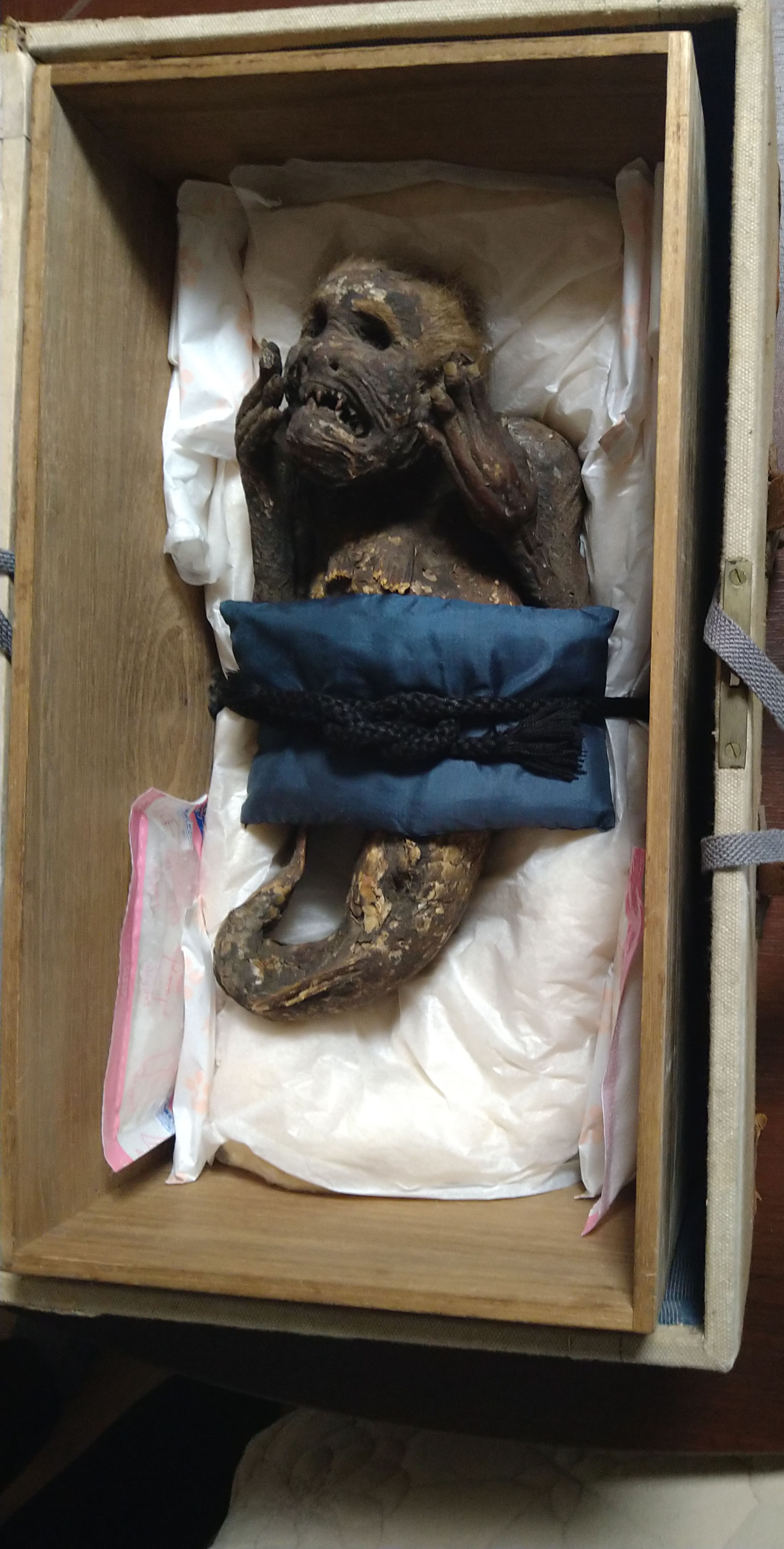For decades, a small blackened mummy has been a source of mystery for priests at a Japanese temple.
The creature, which looks like a monkey-mermaid hybrid, has been kept in southern Japan’s Enjuin temple, built in 838 CE. It has fuzz on its head, teeth, and five fingers on each hand that eerily cup its face as though mid-scream. Scales run down its back.
Videos by VICE
No one knew what the mummy was or how it got to Enjuin temple in Okayama prefecture. For generations of worshippers, the 30 centimeter-long body was an unperturbed, quirky part of the temple—until last year.

Intrigued by the mummy, researchers at the Kurashiki University of Science and the Arts in Okayama Prefecture set out to determine what animal was kept under these mummified wraps. The findings of their yearlong research were announced last week: The mummy wasn’t an animal, it was merely an object.
“Based on our analysis and the history of mummy creation in Japan, we can only conclude that the mermaid mummy was probably man made,” Takafumi Kato, a paleontologist working on the project at the Kurashiki University of Science and the Arts, told VICE World News via email.
Before the research, there was speculation that the mummy could be a monkey, stuck together with part of a fish.
Using a CT scanner, Kato and the other researchers found that the mummy was actually made of paper, cloth, and cotton. X-ray images showed that it lacked major skeletal bones, such as a spine, head bone, and ribs.
That’s not to say it was just a cotton plush toy. The lower body contained fish bones, potentially from a tail or dorsal fin. The mummy’s jaw and teeth were from a carnivorous fish—the only bone in its head—while the arms, shoulders, neck and cheeks are covered with puffer fish skin.
Using radiocarbon dating on the mummy’s scales, scientists determined it was likely made in the late 1800s. Although the researchers did not say why the doll was made or who was responsible, it was probably related to merfolk, which in Japan dates back to the eighth century and was first mentioned in the “Nihon Shoki” (“Chronicle of Japan”).
The book describes events that supposedly happened in about 619 CE, when a creature that was neither fish nor human was caught in a river by a fisherman.
A dozen other mermaid mummies besides the one at Enjuin temple have been found across Japan, but the one in Okayama prefecture was the first that has been closely examined. People have been making these artifacts since the Edo period (1603-1868), during which diseases like smallpox and measles were rampant. It was believed that seeing these rare creatures would bring good luck.
While scientists have clarified the makeup of the mummy, the temple’s chief priest, Kozen Kuida, said it would continue to live on as a special character of the millennia-old institution.
“It’s the same as when people join their hands in front of Buddhist statues made of stone or wood. I would like to continue to protect and pass on this mummy with great care,” he said.
More
From VICE
-

Photo via NYPD Crime Stoppers -

Jonathan Bachman/Getty Image -

(Theodore Parisienne/New York Daily News/Tribune News Service via Getty Images) -

Screenshot: Yogscast Games



